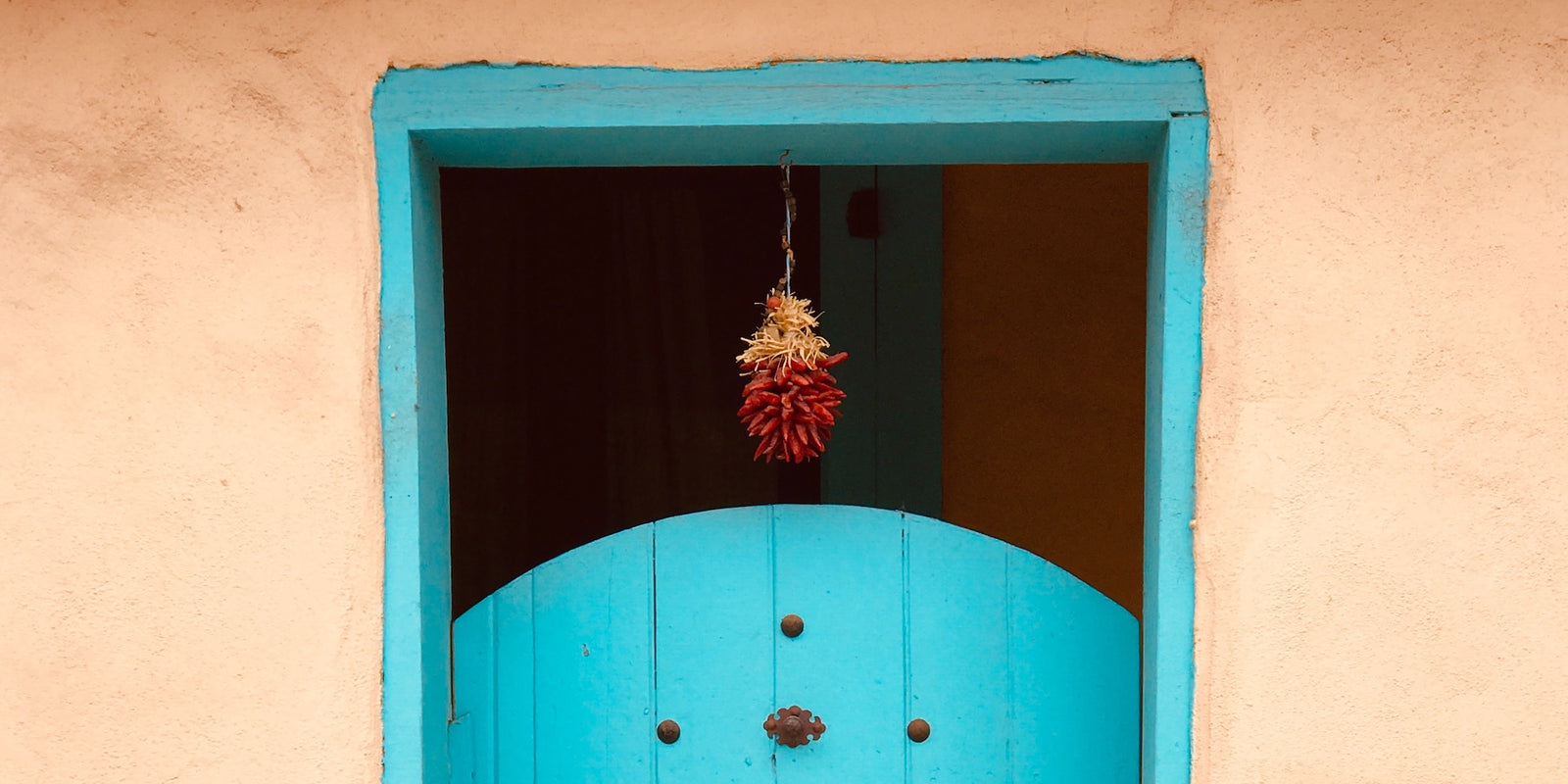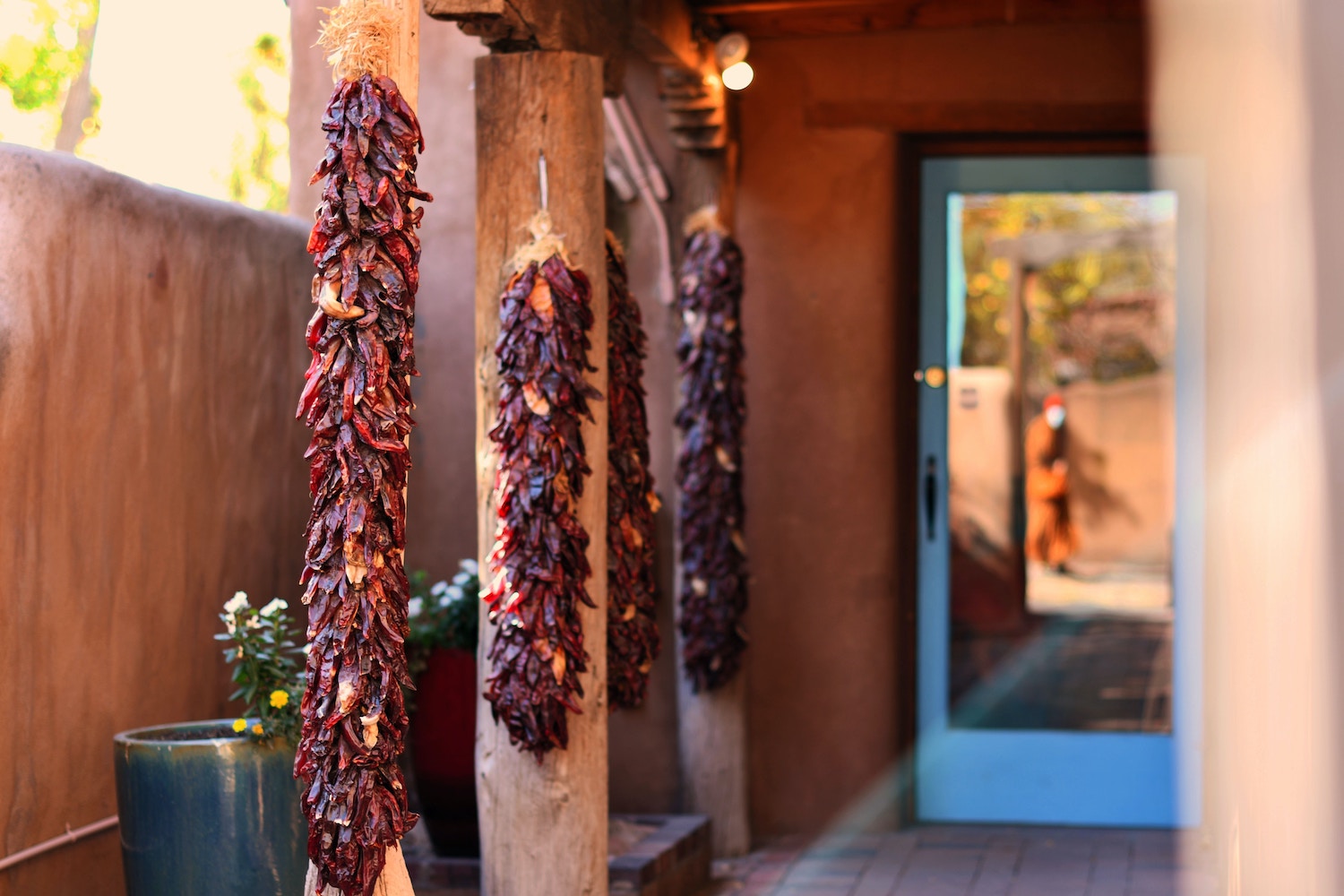Red, Green, or Christmas? New Mexico Chile Question (Recipe Included!)

Red, Green, or Christmas? Did you know that New Mexico is the only state with a “state question”?
While it’s technically a fruit, chile (with an e!) is the state’s official vegetable – along with beans, but that’s for another blog. Not chili, not chiles, but chile, a noun that, in Spanish, is inherently plural, much like the word “sheep” in English.
Pronounced “Chee-lay,” this fruit is an iconic part of New Mexico’s culture, landscape and economy. Peppers grow all over the world, but the chile of New Mexico is unique and a food of the Americas that has been shared and cultivated amongst Indigenous communities and Spanish immigrants from South America to Colorado for eons. Like corn, chile has evolved with the people of this land – foreign and domestic – and because of this the flavor, texture, and overall goodness can’t be replicated anywhere else in the world outside of the Rio Grande Valley.
From Chimayó in Northern, NM, to Hatch, NM, to the South, chile is as indistinguishable from the day-to-day life of New Mexico as water, air, and sunshine. But what is the difference between red and green? And what in the world does “Christmas” imply? Oh, so glad you asked!
Every single environmental factor affects the food we eat. In New Mexico, the PH balance of the soil, the minerals in the groundwater, and the days of sun during the growing season all affect the success of a chile plant. The Hatch area has become synonymous with green chile, while the Chimayó area is celebrated for its red.
The high heat and nearly constant drought conditions of the lower Rio Grande Valley make irrigation and the amount of water plants receive more controlled, combined with the hot temperatures, the chile fruit of the plant will mature beginning in September. Those that get more water will be sweeter, while those that are stressed a bit will be hotter. A drought-tolerant plant, you can have both heat indexes in a field if you try, but the overall flavor will be a direct result of the soil and water conditions.
Green chile is then roasted over fire in big metal roasters to scorch the skin, making it possible to peel them and get to the juicy, meaty parts. Those parts can then be eaten straight up with salt and garlic, frozen for later, or turned into a sauce or stew. Fall in New Mexico is pungent with the smell of roasting chile, a scent that signals the harvest season.
Meanwhile Northern New Mexico is more well known for its red chile. If you leave the chile fruit on the plant to let it ripen it will become more and more red. Once it’s harvested it is laid out in the sun to finish the drying process and then, often, those dry pods are woven together to create a ristra. In late September through October, in small communities such as Jemez Pueblo, you will see roof top after roof top covered in red chile pods and ristras.

The ristra is a way to keep large collections of red chile through the winter, hanging so that rodents and moisture doesn’t ruin it. The pods can then be pulled off at will and ground or blended into flakes or powder to make what is known as red chile.
Wait, but isn’t it all red chile? Yes! But when you’re at a restaurant and they ask if you want green chile or red chile, they mean the sauce, not the full fruit. When they ask you if you want it “Christmas” they mean, half red and half green.
There are those that love red, those that love green and those that love both. This writer is an overall fan of red, and I’ll share my recipe in a moment. Green chile I crave diced and sprinkled with garlic salt over eggs, or by the spoonful, honestly. All chile is an excellent source of Vitamin C.
I learned to make red chile (sauce) from my father, who learned from his mother, who learned from hers and on down the line. This is my favorite recipe because it is so simple and literally requires only four ingredients, and you don’t have to measure anything. The thick texture and vibrant flavor make it a crowd favorite amongst my family and friends who are often shocked to learn how simple and initiative it is to prepare.
Ungie’s New Mexico Red Chile Recipe
Ingredients:
- 5-6 red chile pods
- Water
- Fresh Garlic (or powdered)
- Salt
Supplies:
- Stock or stew pot
- Gloves (or in a pinch, plastic shopping bags over the hands, I don’t judge)
- Collender
- Blender
- Slotted spoon
Steps:
- Cover your hands prior to handling red chile, because otherwise your hands will be spicy for a while no matter how many times you wash them, and while red chile in the eye may be a right of passage, it is not a fun experience.
- One at a time, break the stems off your pods and shake the seeds into the trash. Sometimes I like to save the seeds to plant the next year if I get a really good heirloom batch, or toss them out and just see what the chickens do. Seeds hold heat, so the more seeds you get in the sauce the spicier it will be, though they have an unpleasant texture.
- Rinse the dust off the pods using a colander or just right into the water stream. They will be dusty because chances are they’ve been hanging or sitting a while, even if you just bought them.
- Fill your pot with water and boil the pods. You can’t over boil them. The longer they boil, the softer they’ll be and the easier to blend into a liquid. Boil up to an hour if you have time.
- Using your slotted poon, or tongs, remove the pods and pop them into your blender. By this time, the water in the pot is going to be tinted. All of that tint is spice. If you want a spicier sauce, add a cup or more of the weather they were boiled in to your blender. If you want it more mild, use pure water.
- Start with adding a tablespoon of salt. You can add more later if it isn’t enough. Chile typically needs a lot of salt to get a balanced falvor.I like to taste as I go. I usually add several cloves of fresh garlic. Again, you can always add more to get the right flavor.
- Let ‘er rip. It’s going to take a while for the pods to blend past flakes and into a smooth sauce. Personally, I like it to be as smooth as possible because the flakes have an unpleasant texture and get stuck in your teeth.
- Smother everything in it and enjoy! If it’s too spicy, eat some dairy or honey.
- PS: This is a sauce, not a stew like green chile. Don’t add cumin, or onions, or oregano, or anything like that to the blending process. Rather, add the red chile sauce to your stews, fried potatoes, casseroles, eggs… literally anything. We even make candy, coffee, and ice cream with it.









